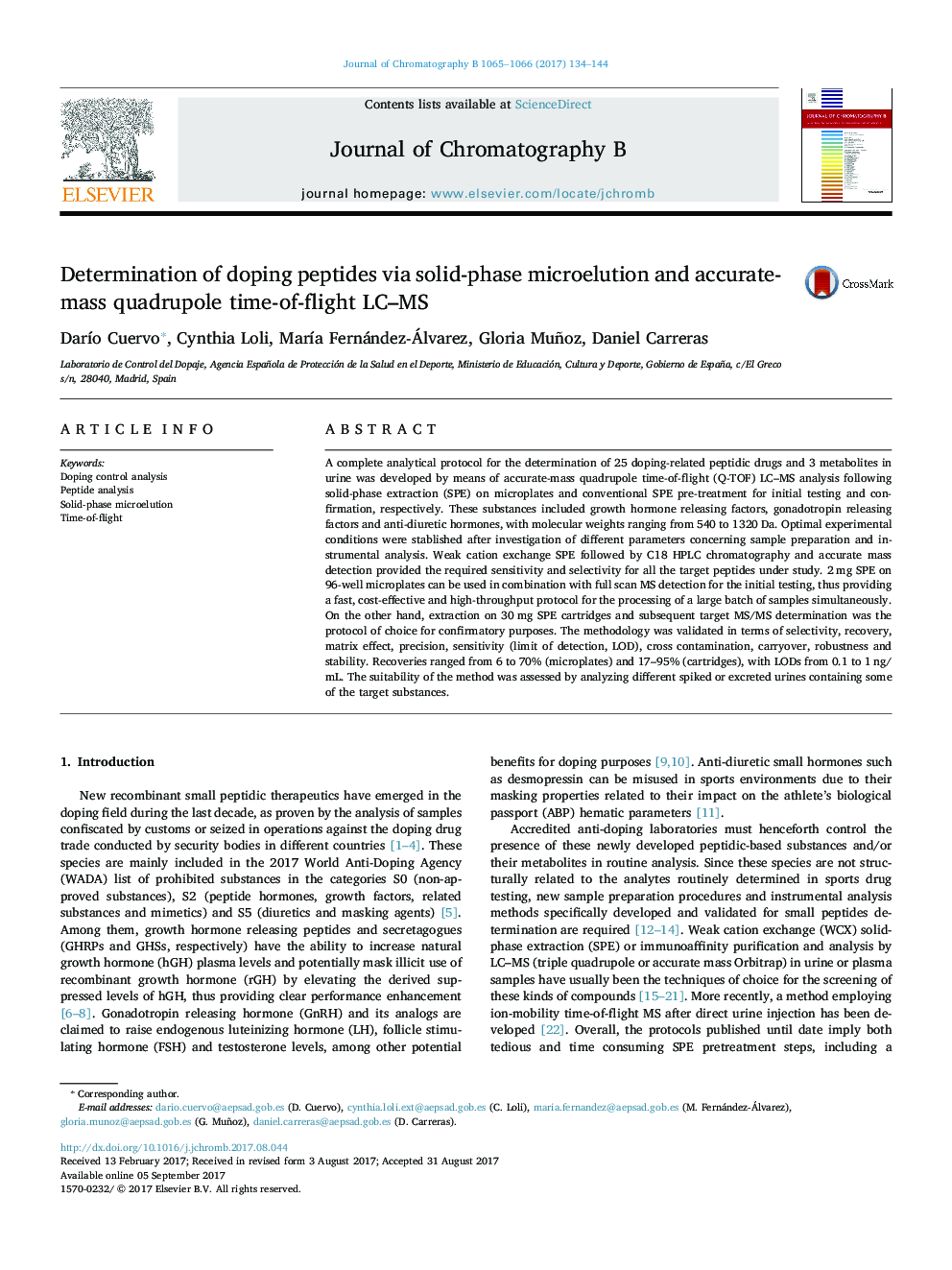| Article ID | Journal | Published Year | Pages | File Type |
|---|---|---|---|---|
| 5136097 | Journal of Chromatography B | 2017 | 11 Pages |
â¢Determination of 28 doping-related substances via LC-MS-QTOF analysis is presented.â¢Fast, high-throughput and cost-effective SPE on microplates is used for screening.â¢Full scan acquisition mode is proposed for initial testing.â¢Product ion MS/MS selected transitions are used for confirmation.â¢Validation results for all tested substances fulfil WADA requirements.
A complete analytical protocol for the determination of 25 doping-related peptidic drugs and 3 metabolites in urine was developed by means of accurate-mass quadrupole time-of-flight (Q-TOF) LC-MS analysis following solid-phase extraction (SPE) on microplates and conventional SPE pre-treatment for initial testing and confirmation, respectively. These substances included growth hormone releasing factors, gonadotropin releasing factors and anti-diuretic hormones, with molecular weights ranging from 540 to 1320Â Da. Optimal experimental conditions were stablished after investigation of different parameters concerning sample preparation and instrumental analysis. Weak cation exchange SPE followed by C18 HPLC chromatography and accurate mass detection provided the required sensitivity and selectivity for all the target peptides under study. 2Â mg SPE on 96-well microplates can be used in combination with full scan MS detection for the initial testing, thus providing a fast, cost-effective and high-throughput protocol for the processing of a large batch of samples simultaneously. On the other hand, extraction on 30Â mg SPE cartridges and subsequent target MS/MS determination was the protocol of choice for confirmatory purposes. The methodology was validated in terms of selectivity, recovery, matrix effect, precision, sensitivity (limit of detection, LOD), cross contamination, carryover, robustness and stability. Recoveries ranged from 6 to 70% (microplates) and 17-95% (cartridges), with LODs from 0.1 to 1Â ng/mL. The suitability of the method was assessed by analyzing different spiked or excreted urines containing some of the target substances.
